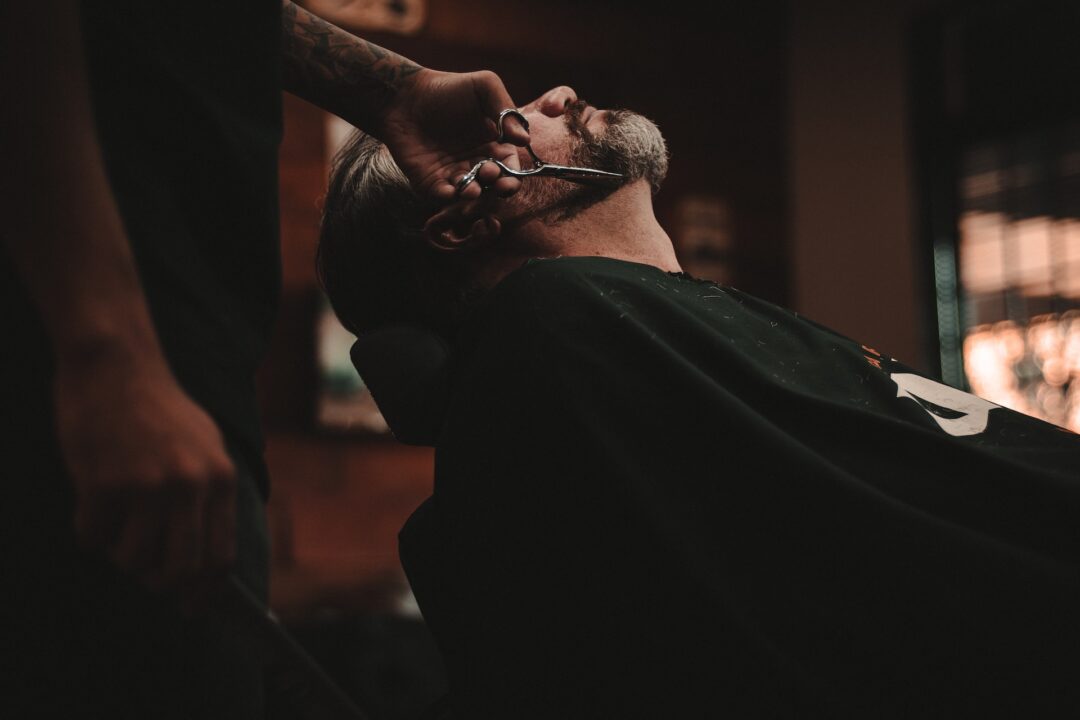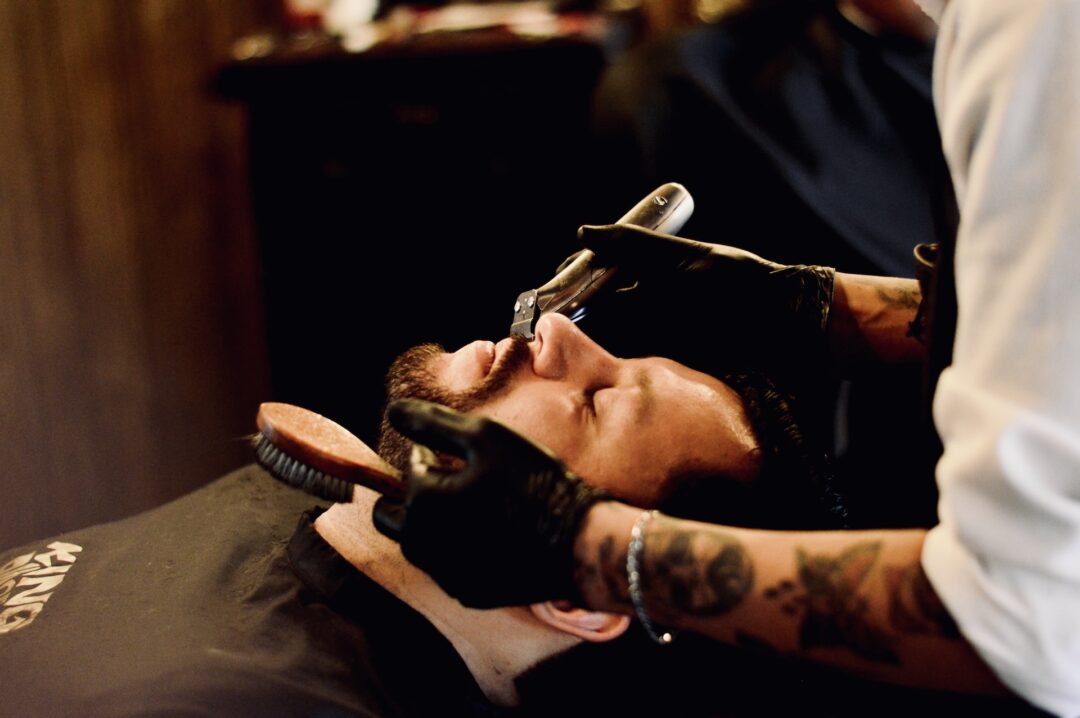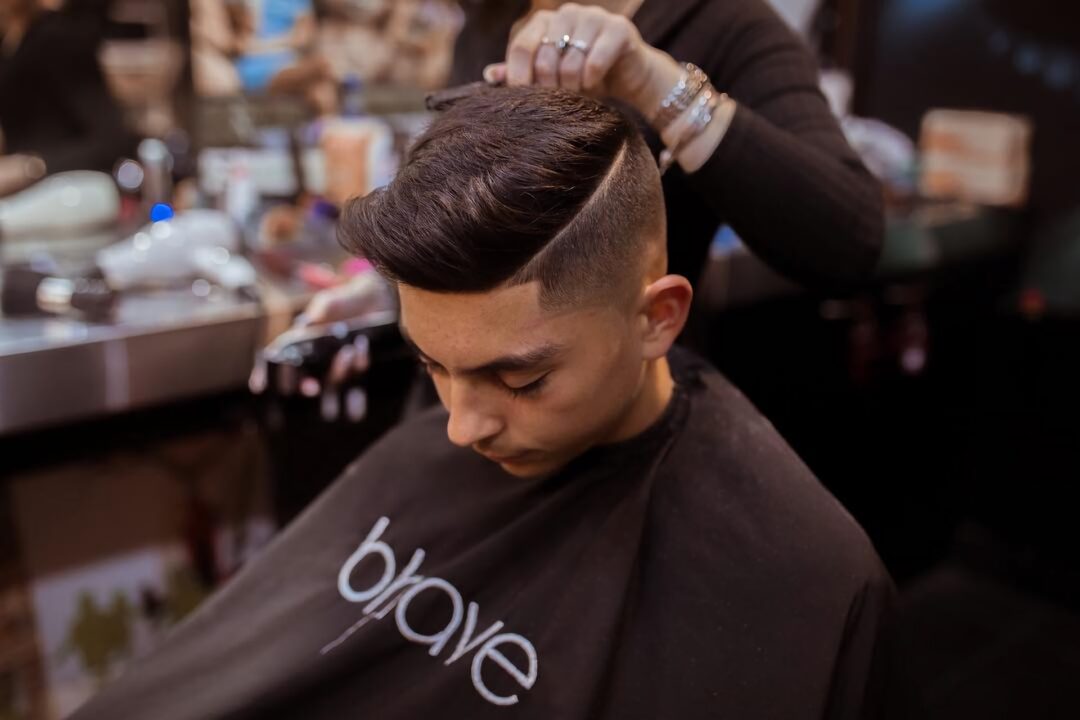In the vast world of grooming mysteries, one question often stands out among many: “Why does one side of my beard grow faster?” If you’ve found yourself pondering this conundrum as you stare into the mirror, you’re not alone. Let’s journey through the intricacies of beard growth and unravel the enigma that has puzzled many a bearded individual.
The Physiology of Hair and Beard Growth
Before diving headlong into the heart of the matter, let’s lay down some foundational knowledge about hair and, by extension, beard growth.
- Hair Follicles: Our skin is dotted with these tiny sacs, from which our body hairs emerge. Whether it’s the hair on your head or the beard on your chin, it all starts from these follicles. The health, density, and vitality of these follicles can directly influence the growth of your beard;
- The Role of Dermal Papilla: Deep within each hair follicle lies the dermal papilla. This structure is responsible for supplying the growing hair strand with nutrients. Furthermore, it’s a hotspot for hormone receptors, particularly those responsive to testosterone and DHT, both of which significantly influence beard growth;
- Growth Phases: Beard hairs don’t grow continuously. They go through distinct phases:
| Phase | Description | Duration |
| Anagen | The phase of active growth, which can span several years. | Several years |
| Catagen | A transitional phase where growth stops, typically lasting a few weeks. | Few weeks |
| Telogen | The resting phase. Here, the hair may fall out, making way for new growth, a cycle which spans months. | Months |
Dissecting the Asymmetry: Reasons for Uneven Beard Growth

So, why does one side of my beard grow faster? It’s a blend of science and personal habits.
The Genetic Blueprint
Genetic Factors and Beard Growth
| Factor | Influence on Beard Growth |
| Genes | Determine beard density, color, and growth rate |
| Hereditary traits | Inherited patterns of beard growth |
| Androgen receptors | Genetic variations in hormone responsiveness |
Genetics play a fundamental role in determining the characteristics of your beard. Your genetic blueprint largely predetermines how dense your beard will be, its color, and notably, its growth rate on various parts of your face. Hereditary factors also contribute, as certain patterns of beard growth may be passed down through generations. Moreover, genetic variations in androgen receptors can lead to differential growth rates on different sides of your face.
Sleep Patterns
Sleep Patterns and Beard Growth
| Factor | Influence on Beard Growth |
| Sleep position | Pressure on one side restricts blood flow |
| Blood circulation | Reduced circulation hampers hair follicles |
| Pillow material | Choice of pillow can affect facial skin health |
The way you sleep can impact beard growth. If you frequently sleep with one side of your face buried in the pillow, it can exert consistent pressure, limiting blood flow to that side. This reduced blood circulation can have a detrimental effect on the nourishment of hair follicles, potentially leading to slower growth on one side. Choosing the right pillow material can also influence the health of your facial skin, which indirectly affects beard growth.
Facial Muscle Dynamics
Facial Muscle Dynamics and Beard Growth
| Factor | Influence on Beard Growth |
| Dominant hand | Muscle activity during eating and expression |
| Blood circulation | Increased circulation due to muscle use |
| Beard growth stimulation | Potential for faster growth on the more active side |
Facial muscle dynamics can play a surprising role in beard growth. If you are right-handed, for instance, you may use the right side of your face more frequently during eating or expressing emotions. This continuous muscle activity can boost blood circulation to that side, potentially stimulating beard growth. Conversely, the less active side may experience slower growth.
The Sun and Your Beard
Sun Exposure and Beard Growth
| Factor | Influence on Beard Growth |
| UV radiation exposure | Damage to hair follicles and stunted growth |
| Uneven sunlight exposure | Differential growth due to varying sun exposure on each side |
| Sun protection | Use of sunscreen or protective measures to mitigate damage |
Prolonged and unprotected exposure to ultraviolet (UV) rays can have detrimental effects on beard growth. UV radiation can damage hair follicles and inhibit their growth potential. If one side of your face is exposed to sunlight more frequently than the other, it can result in uneven beard growth. Therefore, adopting sun protection measures, such as sunscreen or wearing hats, can help maintain more balanced beard growth.
Hormonal Play
Hormonal Influences and Beard Growth
| Factor | Influence on Beard Growth |
| Hormone receptors | Variations in hormone receptor concentration |
| Hormone levels | Potential for differential hormone distribution |
| Hormone-related care | Proper hormone balance and care for beard growth |
Hormonal influences can also contribute to uneven beard growth. While hormones circulate throughout the body, variations in hormone receptor concentration may lead to differential growth on different sides of the face. Additionally, fluctuations in hormone levels can impact the distribution of hair growth. Maintaining a proper hormone balance and providing care tailored to your specific hormone profile can help promote more even beard growth.
Skin Health
Skin Health and Beard Growth
| Factor | Influence on Beard Growth |
| Skin conditions | Increased blood flow as part of the healing response |
| Inflammation | Potential stimulation of hair follicles |
| Skin care regimen | Proper care to manage skin conditions |
Skin health can also play a role in beard growth. Skin conditions like acne or eczema on one side of your face can stimulate hair growth due to increased blood flow as part of the body’s healing response. This can lead to uneven beard growth in cases where one side experiences such skin conditions. Proper skin care and management of skin conditions can help maintain a more consistent rate of beard growth.
Balancing the Scales: Encouraging Even Beard Growth

Having understood the possible reasons behind the question, “Why does one side of my beard grow faster?”, let’s look at potential solutions:
- Stress and Rest: Chronic stress can influence hair growth patterns. Ensure adequate rest, relaxation, and stress-relief techniques to maintain overall health, which in turn can support even beard growth;
- Stay Hydrated: Hydration plays a significant role in skin and hair health. Consuming enough water daily can lead to improved hair growth consistency;
- Trimming Techniques: Regularly trimming your beard can help maintain an even appearance. Using sharp scissors or a quality beard trimmer ensures precision;
- Avoid Harsh Chemicals: Some hair and beard grooming products contain chemicals that may hinder uniform growth. Opt for natural, organic products when possible;
- Exercise Regularly: Increased blood flow and circulation from regular exercise can promote healthier and more uniform beard growth;
- Check Testosterone Levels: Testosterone plays a key role in beard growth. If one suspects hormonal imbalances, consulting a doctor could provide clarity;
- Patience and Observation: Everyone’s hair growth pattern is unique. Sometimes, simply being patient and allowing the beard to grow out more can solve the issue of unevenness;
- Sleeping Habits: The way you sleep, especially if you consistently rest on one side of your face, can impact hair growth. Try alternating sleep positions;
- Gentle Cleansing: Regular, gentle cleansing can free the hair follicles from dirt and oils, promoting better growth;
- Seek Expert Advice: Consider visiting a trichologist, a specialist in hair and scalp disorders, for a comprehensive understanding and personalized solutions.
Conclusion
While “Why does one side of my beard grow faster?” remains a frequently asked query, the answers, as we’ve seen, span genetics, habits, and external factors. Embracing one’s unique growth pattern is essential, but understanding the underlying reasons can empower individuals to take steps towards achieving their ideal beard look. In the grand tapestry of beard tales, remember that it’s not just about symmetry; it’s about the story your beard tells.
FAQs
Why does one side of my beard grow faster, even when I maintain a rigorous skincare regimen?
Beyond external care, internal factors like genetics, hormone levels, and even habitual facial expressions can influence beard growth.
Can trimming help in making my beard appear even?
Yes, regular trimming can give the illusion of evenness, even if the growth rate differs on each side.
How long before I see results after adopting measures for even growth?
Hair growth cycles span weeks to months. Consistent care over a few months will yield noticeable results.



